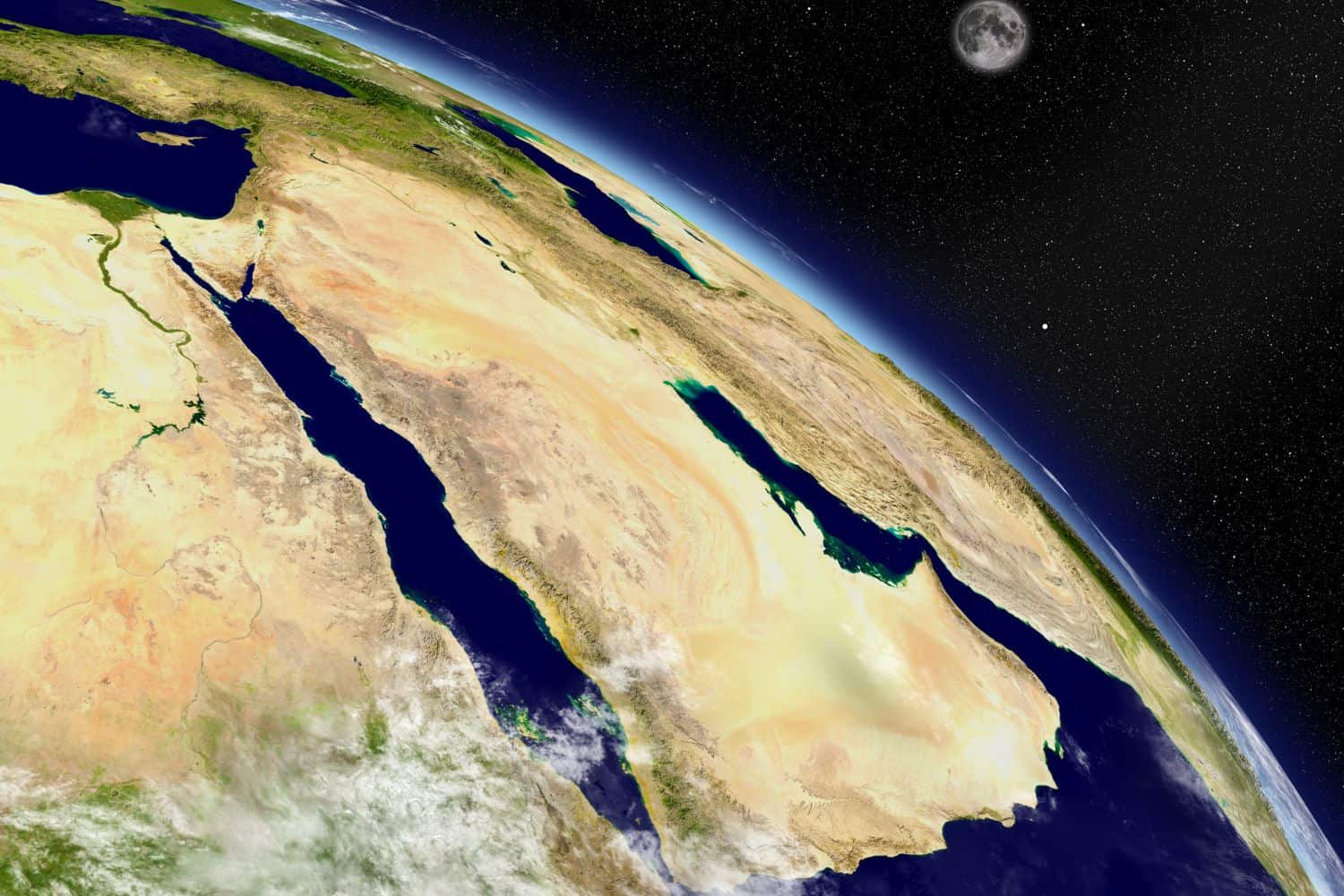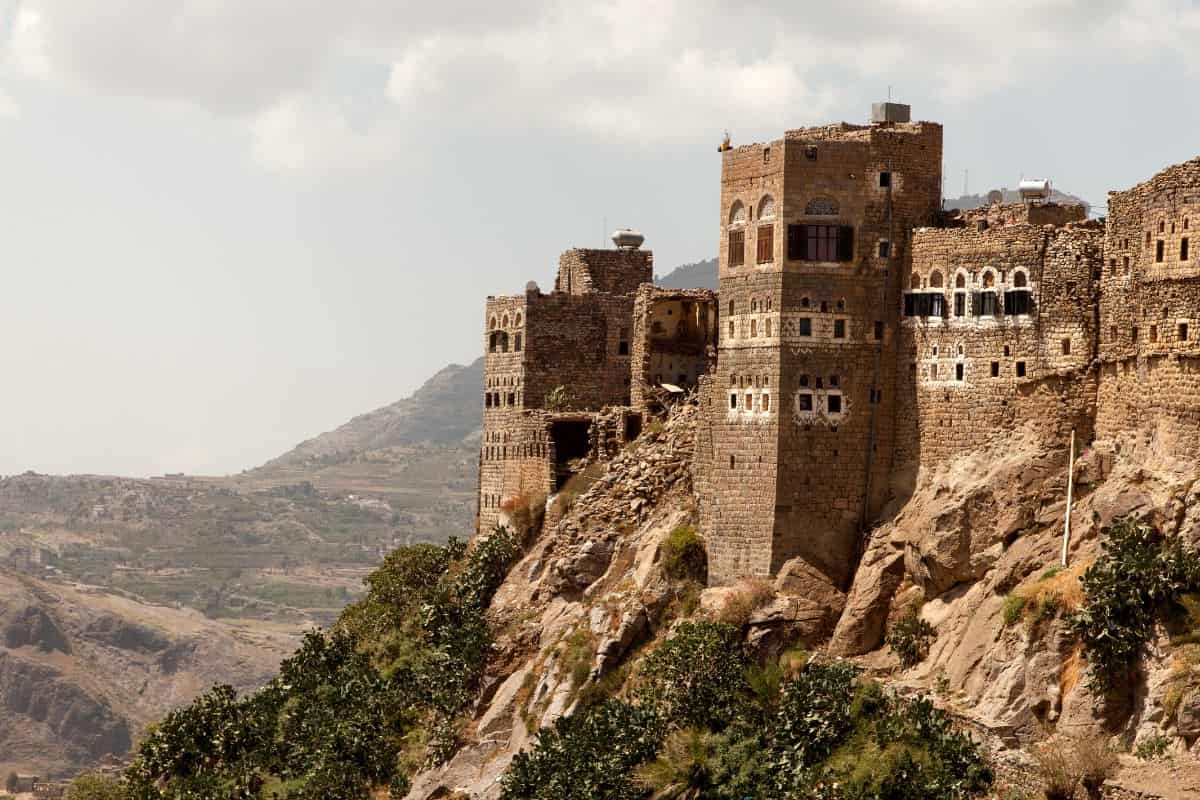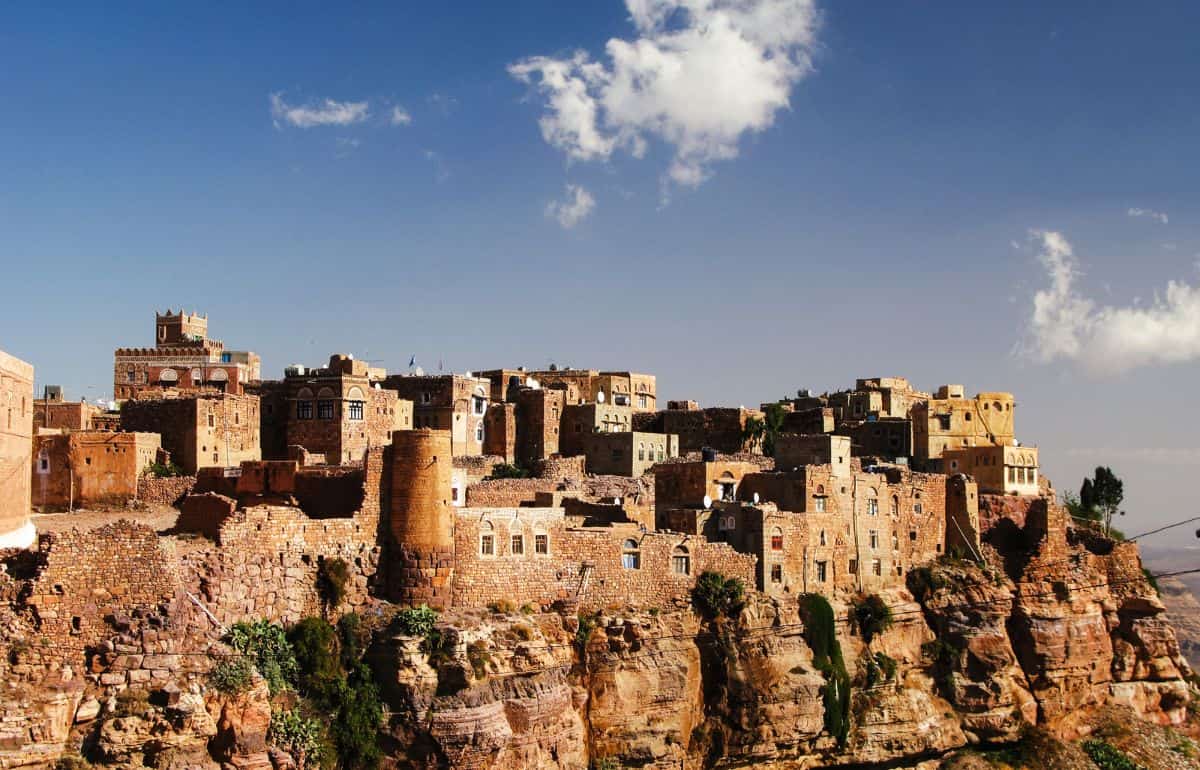The geography of Yemen is a captivating blend of diverse landscapes and historical significance. Situated in the Arabian Peninsula, this nation’s geographic location has played a pivotal role in shaping its history and cultural identity.
Located at the southwestern tip of the peninsula, Yemen’s geography beckons adventurous travelers with its extensive mountain ranges, vast deserts, and fertile coastal plains. From exploring the towering peaks of the Sarawat Mountains to uncovering the cultural tapestry of Sana’a, Yemen’s diverse landscapes and rich history offer an unforgettable journey for intrepid tourists seeking a unique and enriching experience.
Yemen physical geography paints a picture of awe-inspiring natural masterpieces. From the historical wonders of Shibam, often referred to as the “Manhattan of the Desert” representing the nation’s architectural heritage, to the diverse ecosystems that span from the lush wadis to the vast Rub’ al Khali desert, Yemen stands as a testament to nature’s grandeur.
Top Geographic Features of Yemen
- Hadramaut Plateau: This expansive plateau, located in the eastern part of Yemen, is characterized by its arid conditions, wadis, and significant historical sites.
- Red Sea Coast: Lining the western part of Yemen, this coastline provides essential ports and has a rich marine biodiversity, making it significant for both trade and ecology.
- Tihamah Coastal Plain: A narrow flat region along Yemen’s Red Sea coast, the Tihamah is essential for agriculture due to its fertile soil.
- Jabal Haraz: A mountain range in Yemen known for its unique terraced agriculture and historic stone villages, reflecting Yemen’s rich history.
- Socotra Archipelago: Located off the southeastern coast of Yemen, Socotra is known for its unique flora and fauna, many of which are found nowhere else in the world.
- Rub’ al Khali Desert: Known as the “Empty Quarter,” this vast sand desert spans parts of Yemen and is one of the most arid places in the world.
- Wadi Hadramaut: This river valley, stretching through eastern Yemen, is known for its lush vegetation in contrast to the surrounding desert and its historically significant settlements.
- Marib Dam: An ancient engineering marvel located in the city of Marib, this dam was once one of the largest centers of irrigation in ancient Arabia.
- Al-Mahrah Sands: Located in the easternmost province of Yemen, this region is characterized by its extensive dune fields and unique desert ecology.
- Islands of the Bab-el-Mandeb: These islands, situated at the strait connecting the Red Sea to the Gulf of Aden, have strategic importance for maritime trade and naval navigation.
Yemen geographic features play a crucial role in shaping Yemen’s landscape, climate, and cultural history, making them essential elements in defining the country’s geography.
Yemen Geography
Exploring the Yemen National Geographic canvas reveals an impressive array of geographic features. From the rugged peaks of the Sarawat Mountains to the vast Rub al Khali desert and the historic port city of Aden, the country presents an enchanting tapestry of natural wonders.
- Mountain Ranges – The Crown of Diversity: Just as documentaries often highlight towering mountain ranges, Yemen is proud of its Sarawat Mountains. These rugged peaks not only contribute to the country’s scenic vistas but also support unique biodiversity and have deeply influenced its cultural identity.
- Seas – A Portal to Ancient Trade: Yemen’s coastline along the Arabian Sea and the Gulf of Aden recalls ancient trade routes and maritime history. These waters have shaped the nation’s fate, being a crossroads for cultures, goods, and civilizations.
- Deserts – Majestic Sands of Time: Just as documentaries spotlight immense landscapes, Yemen’s Rub al Khali displays vast sand dunes and desert plains. This inhospitable region narrates tales of ancient Bedouin traditions and the country’s historical resilience.
- Historical Sites – Unveiling the Past: Yemen’s historical landmarks, like the ancient city of Shibam, reminisce explorations that delve into ancient civilizations. These remnants serve as a testament to the country’s rich and diverse history.
- Ethnic Diversity – A Cultural Mosaic: Emulating the National Geographic emphasis on diverse cultures, Yemen is a blend of ethnic groups, including Hadrami, Tihami, and various tribal communities. Each group brings forward unique traditions, languages, and customs, painting a colorful cultural landscape.
- Wildlife – Preserving Nature’s Best: Yemen’s protected zones, such as the Socotra Archipelago, parallel the commitment to wildlife conservation. These areas act as vital habitats for unique species, preserving biodiversity in a challenging environment.
- Geological Wonders – A Natural Exhibit: The country’s geological marvels, such as the Dragon’s Blood Trees of Socotra, exhibit Yemen’s natural beauty amidst its challenging landscapes. These structures highlight the marvels of nature in this part of the world.
- Remote Exploration – Mysteries Unraveled: The remote and isolated highlands and valleys of Yemen invite adventurers, reminiscent of explorations into the unknown. These regions provide insights into untouched landscapes and distinct ecosystems.
Yemen’s geographic features are characterized by the prominent presence of the Sarawat Mountains. These impressive heights, which rise majestically across the country, set the scene for Yemen’s varied topography. Historical routes, once pivotal for trade and pilgrimage, crisscross these challenging terrains, linking regions of the Arabian Peninsula.
Meandering through Yemen’s landscapes are the significant wadis, seasonal riverbeds crucial for agriculture and life. Additionally, the vast Rub al Khali desert and the fertile Tihama plains enrich the nation’s distinctive geography.
Yemen Geographic Location
Yemen’s geographic location is very strategic, and its position has played a significant role throughout history. Located in the southwestern part of the Arabian Peninsula, the country has been a nexus for trade, culture, and ideas, emphasizing its historical importance.
Borders of Yemen
Yemen shares borders with two countries. Here is Yemen’s physical geography with the neighboring countries and the approximate total length of each border:
- Saudi Arabia: The border between Yemen and Saudi Arabia is approximately 1,307 kilometers long, making it the longest international border for Yemen.
- Oman: The border between Yemen and Oman is approximately 294 kilometers long.
| Yemen Neighboring Country | Border Length (Approximate) |
|---|---|
| Saudi Arabia | 1,307 kilometers |
| Oman | 294 kilometers |
These international borders define Yemen’s connections to different regions and contribute to the country’s geopolitical significance as a crossroads between the Arabian Peninsula and the Horn of Africa.
Geography of Sana’a Yemen
As the capital city of Yemen, Sana’a is a captivating microcosm of the country’s human geography. Here, various ethnic groups, including Arabs, Afro-Arabs, and South Asians, coexist, contributing to the city’s vibrant cultural tapestry.
Sana’a, the capital city of Yemen
- City of Contrasts: Sana’a is known for its stark contrasts, where modern buildings coexist with traditional Yemeni homes, creating a unique blend of old and new.
- Wadi Dhar: The Wadi Dhar valley is in proximity to the city, playing a significant role in its history and agriculture.
- Sana’a’s Elevation: The city is located at a high altitude, with mountains surrounding it.
- Green Spaces: Sana’a is home to several beautiful parks and gardens, offering a serene escape amidst the bustling city.
- Sana’a’s Historical Significance: With a history deeply rooted in ancient times, Sana’a has witnessed various epochs and played a pivotal role in Middle Eastern politics and trade.
- Diverse Architecture: The city showcases a diverse architectural heritage, reflecting influences from ancient Yemeni, Ottoman, and modern styles.
- Yemeni Music and Dance: Sana’a is a hub for Yemeni music and dance, with its vibrant traditions resonating throughout the city.
- Al-Saleh Mosque: The majestic Al-Saleh Mosque, located in the heart of the city, stands as a symbol of Yemen’s rich religious heritage.
- Sana’a’s Economy: The city serves as Yemen’s economic and cultural hub, attracting people from all over the country seeking opportunities and education.
- Population Growth: Sana’a has experienced steady population growth, with a significant influx of people from various regions, leading to urbanization and infrastructure challenges.
Historical Geographical Importance of Yemen
Throughout the ages, Yemen’s geographical significance has made it a sought-after stage for historical drama. As empires and nations rose and fell, from ancient kingdoms like the Sabaean to the Ottomans and the European powers, Yemen’s geographic position played a pivotal role in shaping the region’s history.
- Strategic Gateway: Yemen’s location as a gateway between Africa and Asia, overlooking the Bab-el-Mandeb Strait, has made it a strategic point for trade, cultural exchange, and military endeavors throughout history.
- Ancient Trade Routes: The ancient Incense Route passed through Yemen, connecting civilizations and facilitating the exchange of goods, ideas, and cultures.
- Rise of the Sabaean Kingdom: Yemen was home to the ancient Sabaean Kingdom, famous for the legendary Queen of Sheba, which left a significant mark on history and archaeology.
- Ottoman Involvement: During various periods, Yemen became a focal point of Ottoman interests as they sought to extend their empire and influence in the Arabian Peninsula.
- European Interests: Yemen’s strategic position attracted European powers in the 19th and early 20th centuries, leading to colonial ambitions and treaties.
- Influence of Ancient Civilizations: Yemen was home to several ancient civilizations, like the Himyarites and Hadramites, influencing its early history and culture.
- Challenges of the Ottomans and Europeans: The invasions and interests of foreign powers in the late 2nd millennium had a profound impact on Yemen’s history, leading to a blend of cultures and traditions.
- Terraced Agriculture: The mountainous regions of Yemen, with their unique terraced agriculture, have become symbols of the nation’s cultural and historical identity.
- Influence of Qat and Coffee: Yemen’s position in global trade gave rise to the cultivation and popularization of coffee, and locally, the tradition of qat chewing, which have since had cultural and economic implications.
The geographical position of Yemen, located at the southwestern corner of the Arabian Peninsula, is a blend of historical significance and unique natural landscapes. This nation is characterized by its rugged mountainous terrain, Red Sea coastline, and the unique Socotra Archipelago, known for its biodiversity and distinct flora and fauna. Yemen’s strategic location at the Bab el-Mandeb strait, a crucial maritime chokepoint leading to the Suez Canal, has historically made it a vital player in trade routes linking the Mediterranean Sea with the Indian Ocean.
In conclusion, Yemen’s geographical placement has deeply influenced its historical and cultural development. It has been a crossroads of cultures and empires, from ancient Sheba to Ottoman and British influence. Its position along key maritime routes has historically made it a center for trade and cultural exchanges between Africa, the Middle East, and Asia. Despite facing significant contemporary challenges, Yemen’s strategic location continues to play a central role in the geopolitics of the Middle East and the Red Sea region.








